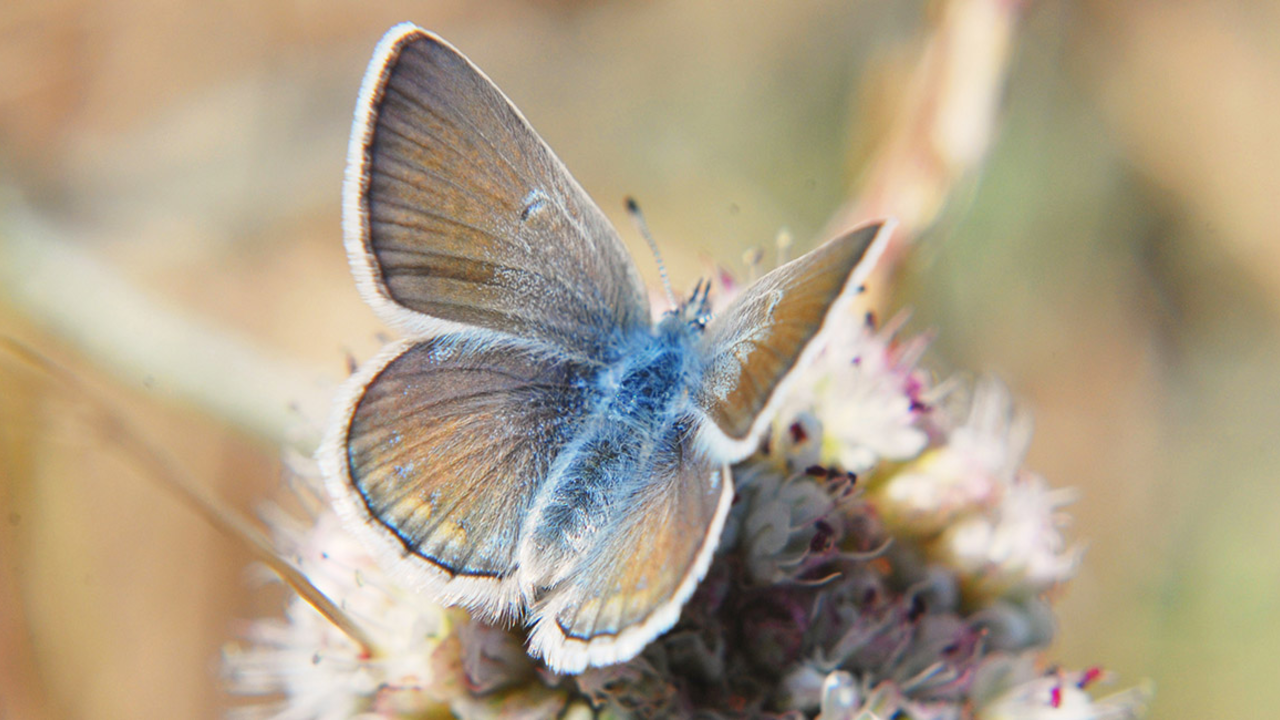Where in the Parks Can You Find the Mission Blue?

Jessica Weinberg McClosky/Parks Conservancy
The mission blue butterfly is an endangered butterfly native to the Bay Area. Males are a light, iridescent blue, and females are brown with blue towards the base. Their undersides are silvery gray, with black spots enclosed in white halos.
Mission blue butterflies live in open grassland areas, and lupines are their preferred host plant. The Bay Area was once covered with native grasslands, but most of these ecosystems have since been converted to farmland and urban areas.
Once common, the mission blue now only lives at six sites in the Bay Area, including Milagra Ridge in our Golden Gate National Parks! Because its populations are so small, we are working to restore its habitat at Milagra to help the species thrive.
Lupines Impact on its Habitat
Lupines are a flowering shrub in the pea family, with light purple or blue flowers. Each leaf has five leaflets, arranged in a circular formation—much like a hand’s palm and fingers.
They are native to open grasslands in California and Oregon and as nitrogen fixers they play an important role in enhancing the fertility of the soil at Milagra.
Lupines also provide vital habitat for butterflies. Specifically, they are the host plant to our endangered mission blue butterflies. The butterflies use the lupines to lay their eggs, and when they hatch into caterpillars, the lupines are their food source as they grow.
Don’t miss your chance to see the mission blue butterfly. You will be seeing them fly about until June.